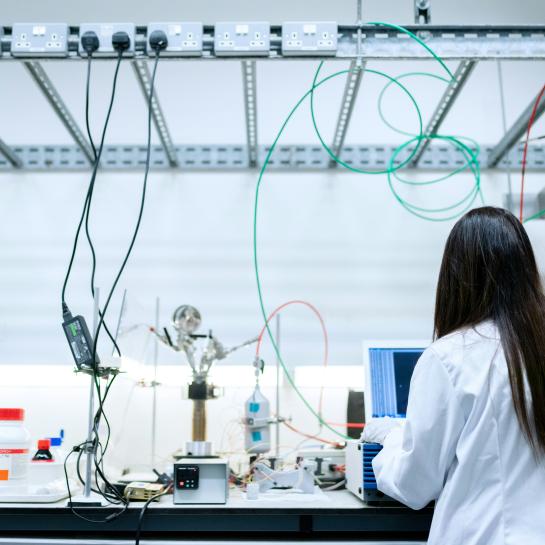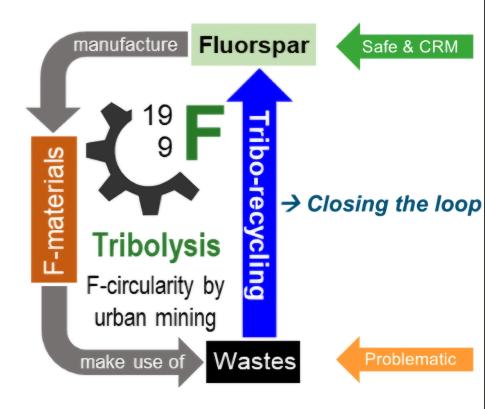
Acronym: TriFluorium
Title: Tribo-Reactor for fluorine circularity by urban mining
| Call | HORIZON-EIC-2024-PATHFINDEROPEN-01 |
| EU nr | 101187492 |
| Period | 48 months - 01.02.2025 to 31.01.2029 |
| Project budget | € 2,913,913.75 |
| VUB budget | € 383,000 |
| Contact | Prof. Luc Leyns & Prof. Marc Elskens |
What is the TriFluorium project about and what are the main goals?
The overall objective of TriFluorium is to lay scientific and technological foundations for tribolytic F-recycling technology applicable to highly stable versatile organo-fluoride waste, i.e., per-/poly-fluorinated ones (PFAS), and especially fluoropolymers with the highest F-content. This will be enabled by obtaining proof-of-concept for robust, energy efficient, safe tribolytic recycling of organo-fluorides to industrially valuable inorganic fluorides. The technological advancement of the tribolysis will be achieved by laboratory validation of tribolytic recycling of exemplary waste by dedicated Tribo-Reactor at preparative scale. The device will have tuneable operational conditions to particular waste type and reaction monitoring capabilities for addressing initiation and reaction propagation stages, as well as to comply with safety and regulation aspects and features for future compatibility to any pre-/post-processing industrial waste treatment stages
Why are fluorine and fluorospar considered critical raw materials and how can TriFluorium address this challenge?
Raw materials are crucial to Europe’s economy. They form a strong industrial base, producing a broad range of goods and applications used in everyday life and modern technologies. Fluorine and fluorspar appear on the 2023 final list of materials at high risk of supply chain disruption; and/or that perform a critical function in one or more energy technologies, including technologies that produce, transmit, store, and conserve energy. TriFluorium aims to ensure sustainable and efficient regeneration of fluorine into inorganic fluorides as industrial resources, such as fluorspar from highly stable organofluorine wastes (PFAS, including fluoropolymers)
What will be the broader societal impact of TriFluorium?
Trifluorium should make it possible to determine the future suitability of the tribolysis recycling process with the product market, in order to ensure the recycling of highly stable organic fluoride waste and the circularity F of relevant industrial resources that can replace mining and provide better quality raw materials (without disruptive elements present in natural ores).
What is VUB’s role in the TriFluorium consortium?
The VUB is co-leader of the WP focusing on safety and sustainability assessment. This WP aims to provide proof of concept that tribolysis can degrade polytetrafluoroethylene (PTFE) into non-toxic and sustainable by-products that can be recovered as part of a circular economy. By developing and validating innovative in vitro and in silico tests, the WP will assess the toxicity of perfluorooctanoic acid (PFOA) and other potential chemical residues, such as hexafluoropropylene oxide dimer acid (HFPO) and perfluorobutane sulphonic acid (PFBS). These are chemical residues of PTFE whose harmlessness to the environment and public health is in doubt, and which could be released during tribolytic processes at temperatures above 300°C

Tribolysis reaction hypothesis for simultaneous activation of reactants enabling quick-quenching of generated Rf-radicals
